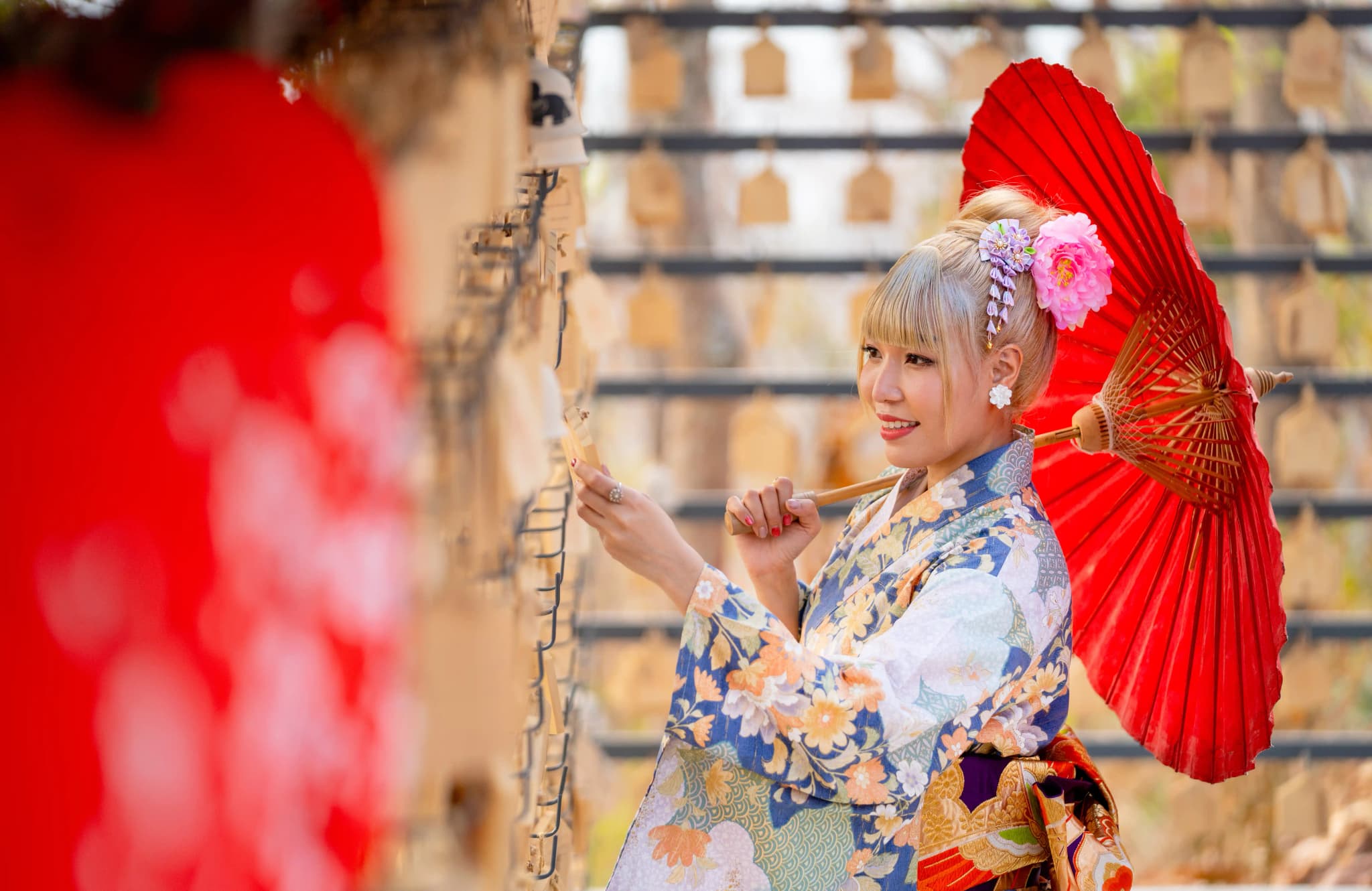
Discover The Top 4 Hidden Gem Temples in Kyoto
When travelers think of Kyoto, iconic temples like Kinkaku-ji (Golden Pavilion) and Fushimi Inari Taisha often come to mind. But beyond these famous landmarks lies a world of hidden sanctuaries, where history, nature, and Zen philosophy blend seamlessly. These lesser-known temples offer peaceful retreats away from the tourist crowds, each with its own unique charm, architectural wonders, and seasonal beauty.
From the mesmerizing Karesansui rock gardens of Komyo-in to the bamboo-surrounded serenity of Jizo-in, these temples provide a glimpse into Kyoto’s authentic spiritual heritage. Whether you're drawn to vibrant autumn foliage, historical treasures, or the quiet elegance of traditional Japanese gardens, this guide will take you on a journey to six of Kyoto’s most breathtaking hidden gem temples.
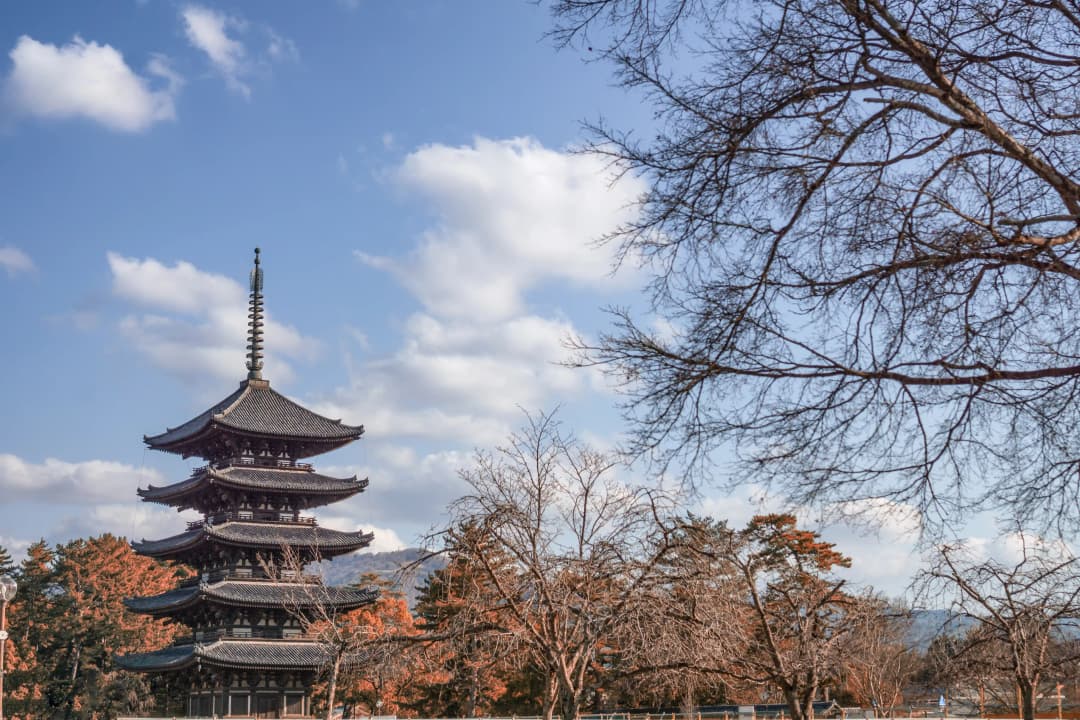
Top 4 Lesser Known Temples in Kyoto
Komyo-in
Nestled in Kyoto’s Higashiyama Ward, Komyo-in Temple is a hidden gem renowned for its serene Karesansui (dry landscape) garden. This meticulously designed space features gracefully arranged rocks, velvety moss, and pristine white gravel. The stones are sculpted to mimic ocean waves, creating a meditative atmosphere.
The temple’s nickname, "Temple with Rainbow Moss," stems from the lush green hues that shift beautifully with the seasons. During autumn, fiery red maple leaves contrast against the tranquil moss, elevating the temple’s ethereal charm. Komyo-in is a must-visit for those seeking a peaceful retreat away from Kyoto’s bustling tourist spots. Its minimalist beauty, paired with nature’s seasonal transformation, makes it an ideal place for meditation and quiet contemplation.
Visitor Information:
Address: 15 Chome-809 Honmachi, Higashiyama Ward, Kyoto, Japan
Opening Hours: 7:00 AM – Sunset (Seasonal variations apply)
Admission Fee: 500 JPY
How to Get There:
- 5-minute walk from Tobakaido Station (Keihan Main Line)
- 10-minute walk from Tofukuji Station (JR Keihan Line)
- 10-minute walk from Tofukuji Station (Kyoto City Bus / Keihan Bus)
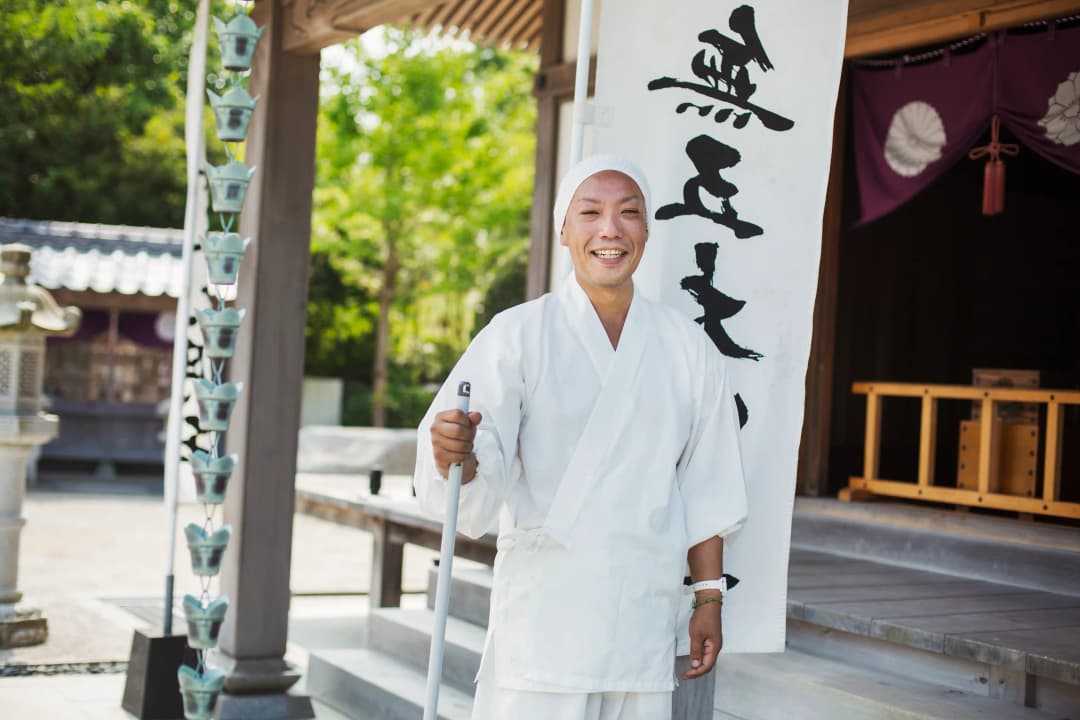
Taiho-in
Tucked away in the inner precincts of Myoshin-ji Temple, Taiho-in is a rarely accessible subtemple that welcomes visitors only during two special seasons—the fresh green season (April to mid-May) and the autumn foliage season (November). This exclusivity enhances its tranquil charm, making each visit a truly unique experience.
Surrounded by lush gardens and serene temple architecture, Taiho-in offers an immersive glimpse into Kyoto’s timeless beauty. During the autumn season, guests can enjoy a stunning Shoin-zukuri-style room while sipping on matcha (Japanese green tea) and indulging in a traditional sweet. This intimate tea experience, set against a breathtaking seasonal backdrop, is a limited-time opportunity for those seeking a deeper connection with Kyoto’s heritage.
Visitor Information:
Address: 20 Hanazonooyabucho, Ukyo Ward, Kyoto, Japan
Opening Hours: 9:00 AM – 12:00 PM & 1:00 PM – 4:00 PM
Admission Fee: 800 JPY (includes matcha and tea treat)
How to Get There:
- 5-minute walk from City Bus stop "Myoshinji Kitamon-mae"
- 10-minute walk from Hanazono Station (JR Sagano Line)

Jisso-in Temple
Nestled in Kyoto’s Sakyo Ward, Jisso-in Temple is a site of deep historical significance, once maintained by ancient imperial family relatives. Beyond its noble heritage, the temple captivates visitors with two stunning gardens, each offering a distinct aesthetic experience.
The first is a pond-centered garden, embodying the harmonious balance of nature and water. The second is a Karesansui (dry landscape) garden, where precisely arranged stones symbolize flowing water. Both gardens undergo breathtaking transformations throughout the seasons, making every visit unique.
The Enchanting "Yuka-momiji" Phenomenon
Jisso-in is most famous for "Yuka-momiji", an awe-inspiring spectacle where vibrant autumn leaves reflect onto the temple’s highly polished wooden floor. This mirror-like illusion creates a surreal visual experience, drawing photography enthusiasts and nature lovers alike.
Visitor Information:
Address: 121 Iwakura Aguracho, Sakyo Ward, Kyoto, Japan
Opening Hours: 9:00 AM – 5:00 PM
Admission Fee: 500 JPY (adults) & 250 JPY (Elementary & Junior High School Students)
How to Get There: Kyoto Bus stop "Iwakura Jissoin"
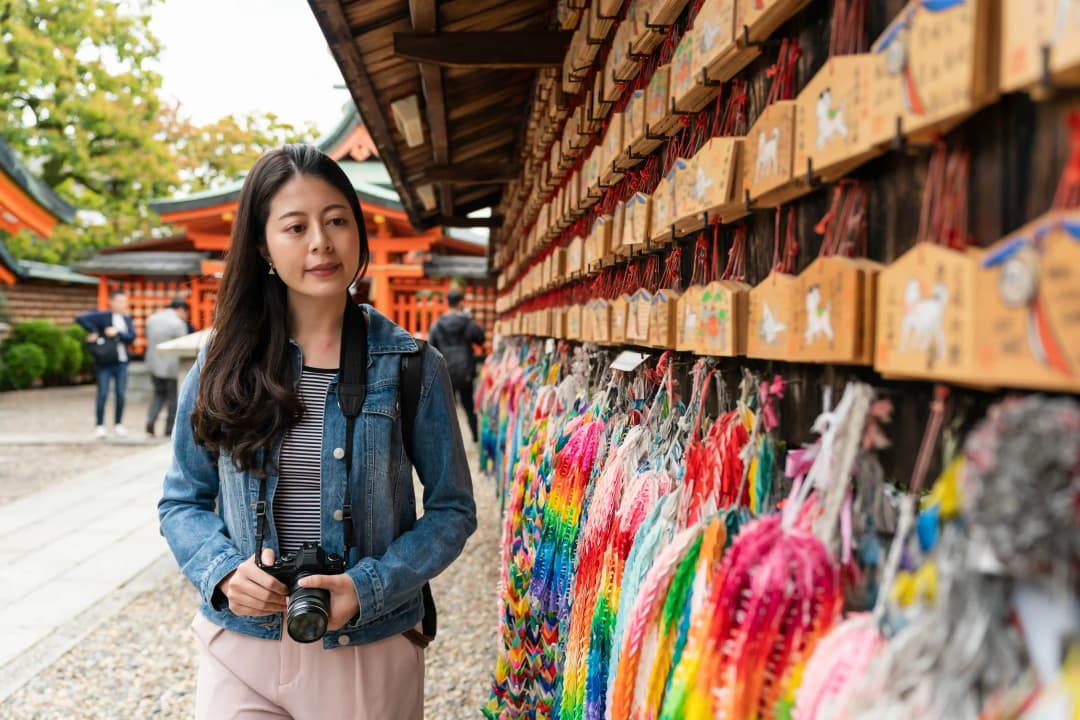
Komyo-ji Temple
Nestled in Nagaokakyo, just outside central Kyoto, Komyo-ji Temple is renowned for its breathtaking autumn foliage. Its entrance path, known as "Momiji-Sando" (Approach with Autumn Leaves to the Temple), becomes a mesmerizing tunnel of fiery maple leaves each fall. Vibrant reds, oranges, and yellows paint both the canopy above and the ground below, creating a natural carpet of autumn beauty.
Beyond its visual splendor, Komyo-ji holds great historical importance. It was here that Honen Shonin, the revered founder of the Jodo (Pure Land) sect of Buddhism, first spread his teachings. Visitors can explore the temple’s serene halls and gardens, experiencing a profound sense of tranquility and reflection. While the temple is stunning at any time of day, it is most magical at dusk, when the soft glow of the evening light enhances the vibrant maple hues, creating an unforgettable scene.
Visitor Information:
Address: Saijo-no-uchi 26-1 Ao, Nagaokakyo, Kyoto, Japan
Opening Hours: 9:00 AM – 4:00 PM
Admission Fee:
- General Admission: Free
- Autumn Season Fees:
- Adults: 1,000 JPY
- Students (Middle & High School): 500 JPY
- Groups (20+ people): 800 JPY per person
How to Get There: 6-minute walk from Bus stop "Asahigaoka Home-mae"

Articles for you

Explore 4 Unique Cultural Experiences in Yamagata, Tohoku Region
Tucked away in Japan’s Tohoku region, Yamagata Prefecture offers a treasure trove of cultural experiences that blend history, craftsmanship, spirituality, and vibrant nightlife. From centuries-old artisanal techniques to mountain temples steeped in legend, every corner of Yamagata invites visitors to immerse themselves in authentic Japanese traditions.
Let’s travel to Yagamata Prefecture and discover the top 4 unique cultural experiences in this place. Each of these tells a story of heritage, innovation, and community, making Yamagata a destination unlike any other.

Top 6 Off-The-Beaten Paths You Can Get To By Train in Japan
Railway travel in Japan is a dream for train enthusiasts. The country’s extensive rail network not only provides fast and budget-friendly connections between major cities but also offers a seamless way to explore its hidden gems. Beyond the bustling urban hubs, Japan’s railway systems grant access to breathtaking remote destinations—letting you soak in stunning landscapes without the stress of driving. Let’s travel to these 6 hidden gems you can easily get to by train in Japan.

Explore The Traditional Japanese Tea Ceremony
The Japanese Tea Ceremony (茶道, Sadō or Chado) is an art form, a philosophy, and a path to mindfulness. Rooted in Zen Buddhism, this ritual embodies four key principles: harmony (和, wa), respect (敬, kei), purity (清, sei), and tranquility (寂, jaku). Every movement, from preparing the matcha to presenting the tea bowl, carries deep meaning. This centuries-old practice is not about rushing but about slowing down. It teaches us to appreciate the moment, the surroundings, and the people we share it with. Whether performed in a traditional tea room or a modern setting, the ceremony fosters a sense of connection to nature, to others, and to oneself.
Join us as we explore the origins, evolution, and cultural significance of this revered Japanese tradition.
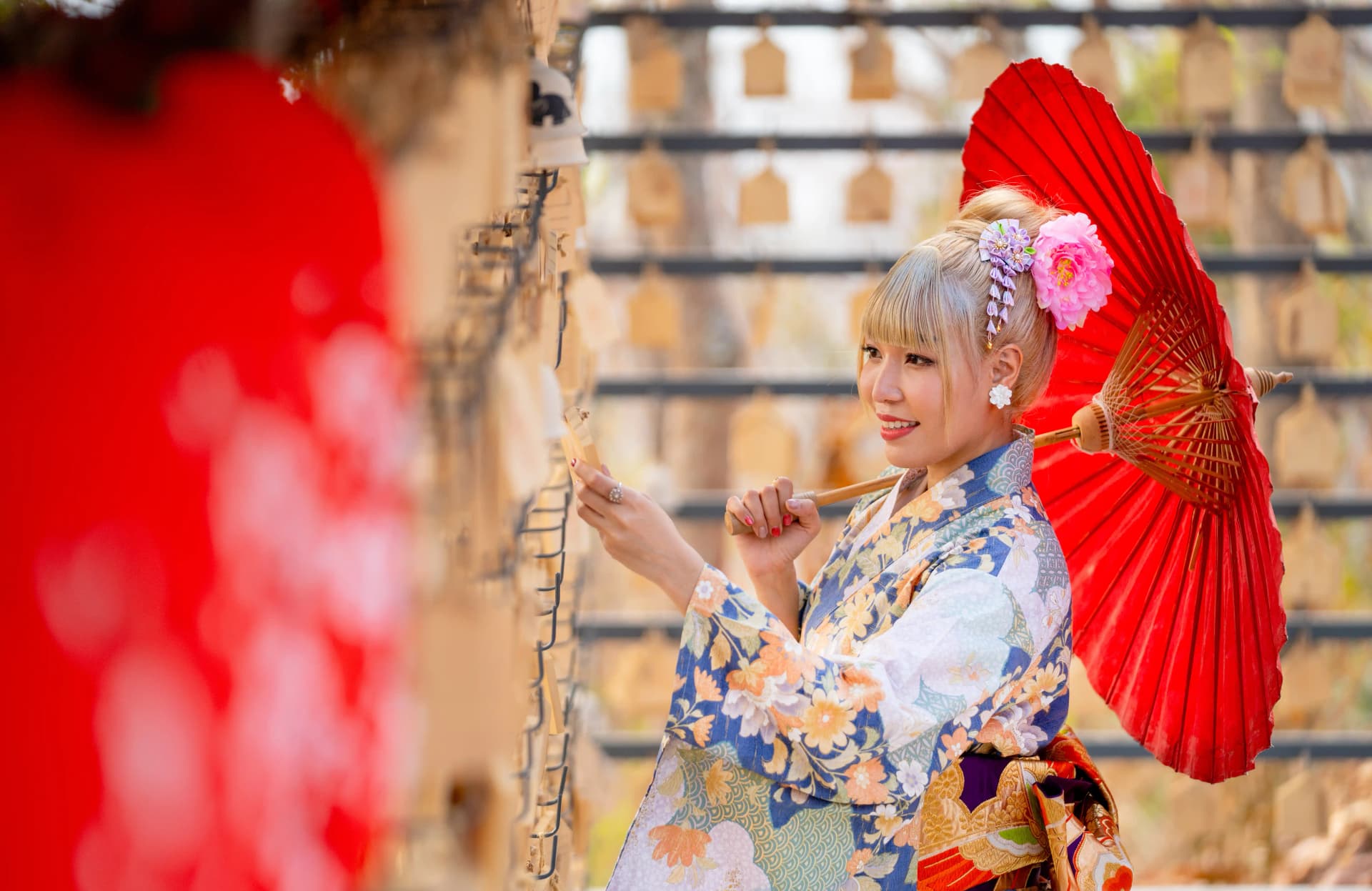
6 Unique Festivals In Japan First-Time Travelers Should Not Miss
Japan is one of the most interesting tourist destinations around the world where cutting-edge technology intertwines with ancient traditions. Its traditions are brought to life through vibrant festivals (matsuri) and cultural local celebrations. From the thrilling clashes of danjiri floats to the graceful rituals of rice planting, each festival tells a unique story, offering visitors chances to witness and even participate in centuries-old customs.
Be mesmerized by the beauty of illuminated celebrations and sacred connection to Japan’s ancient roots with these top 6 unique festivals first-time travelers should not miss.




